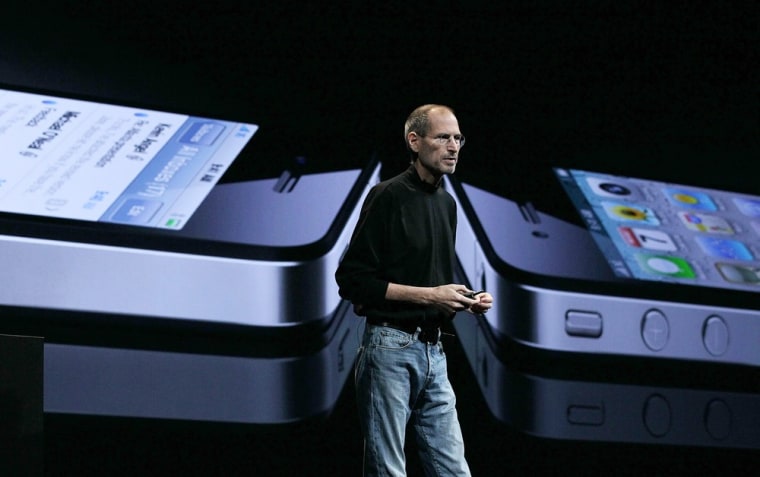Consumer Reports said Monday it cannot recommend the iPhone 4 after testing confirmed "there is a problem with its reception."
The highly regarded publication said its engineers tested three iPhone 4s, and found that complaints by others about the phone's reception are valid. Apple, contacted for comment, has not yet responded.
"When your finger or hand touches a spot on the phone's lower left side —an easy thing, especially for lefties — the signal can significantly degrade enough to cause you to lose your connection altogether if you're in an area with a weak signal," Consumer Reports said. "Due to this problem, we can't recommend the iPhone 4."
There is, the magazine noted, an "affordable solution for suffering iPhone 4 users. Cover the antenna gap with a piece of duct tape or another thick, non-conductive material. It may not be pretty, but it works. We also expect that using a case would remedy the problem. We'll test a few cases this week and report back."
Just 10 days ago, Consumer Reports said on its electronics blog that while holding the iPhone 4 "in certain ways does cause signal loss," that's true for "all cell phones."
"All phones are subject to interference from the human who is using them," wrote Mike Gikas on the blog. "And even if the alleged signal loss is real, there's an absence of hard evidence that iPhone 4 reception is problematic compared to past iPhones; indeed, there's evidence of just the opposite."
However, a note added since then to the blog says "Since posting this report, Mike Gikas has also experienced the 'dropped call' issue which many of our readers have been attesting to in our blog readers' comments section."
The iPhone 4 reception and antenna issues began almost immediately after the phone went on sale June 24. The new phone, unlike its predecessors, has the antenna wrapped around the phone's casing, which some have described as a design flaw.
Apple, in a previous statement, said that "Gripping any mobile phone will result in some attenuation of its antenna performance, with certain places being worse than others depending on the placement of the antennas. This is a fact of life for every wireless phone."
The company said that those iPhone 4 users who have the problem should "avoid gripping it in the lower left corner in a way that covers both sides of the black strip in the metal band, or simply use one of many available (phone protector) cases."
A class-action lawsuit has been filed against Apple and AT&T, exclusive carrier of the iPhone in the United States, over the iPhone 4's antenna reception.
Consumer Reports said that the "signal problem is the reason that we did not cite the iPhone 4 as a 'recommended' model, even though its score in our other tests placed it atop the latest Ratings of smart phones that were released today.
"The iPhone scored high, in part because it sports the sharpest display and best video camera we've seen on any phone, and even outshines its high-scoring predecessors with improved battery life and such new features as a front-facing camera for video chats and a built-in gyroscope that turns the phone into a super-responsive game controller," the publication said. "But Apple needs to come up with a permanent — and free — fix for the antenna problem before we can recommend the iPhone 4."
